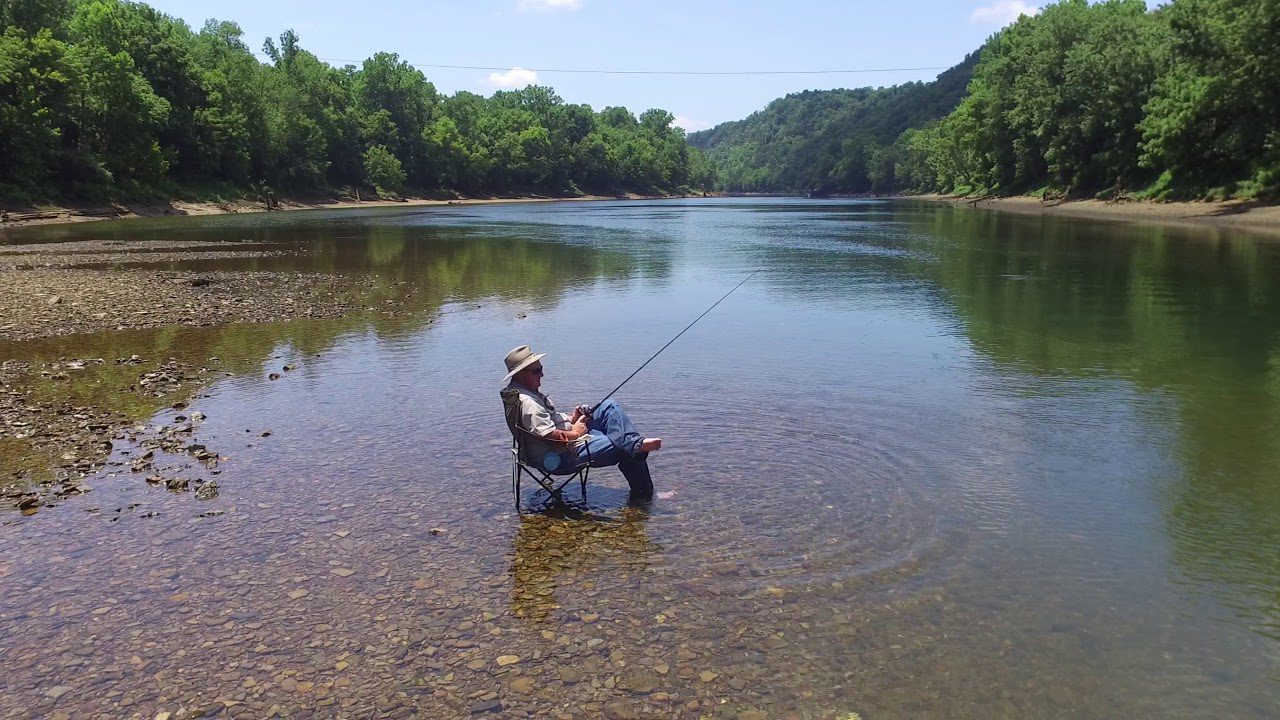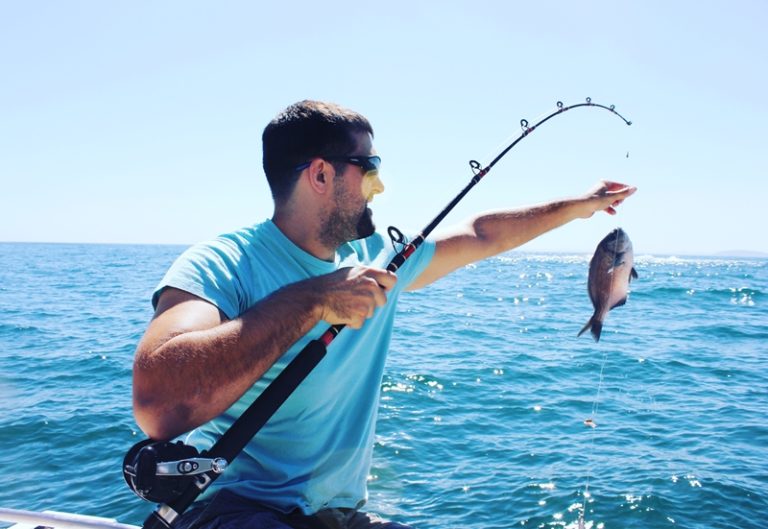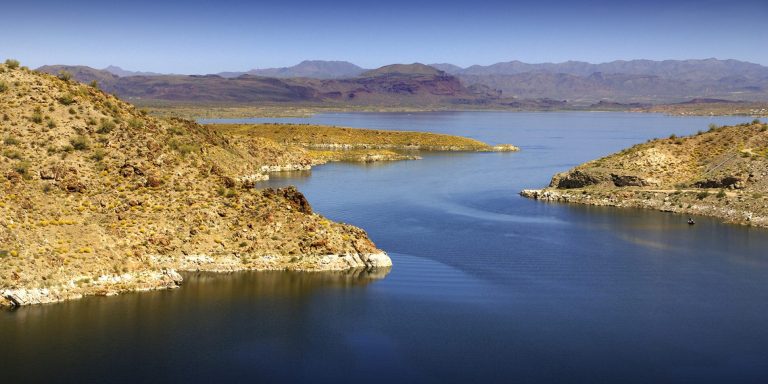Kentucky, with its diverse waterways and abundant fish populations, is a true angler’s paradise. From the expansive Kentucky Lake to hidden Appalachian streams, the Bluegrass State offers fishing experiences that cater to both novice and seasoned anglers. This comprehensive guide will walk you through everything you need to know about fishing in Kentucky, from top spots and species to regulations and conservation efforts.
Kentucky’s Fishing Landscape
Kentucky boasts over 62,000 miles of fishable streams and 40 public lakes, providing year-round opportunities for anglers. The state’s varied terrain, from rolling hills to mountainous regions, creates diverse aquatic habitats that support a wide range of fish species.
As an avid angler who’s fished these waters for decades, I can attest to the unique charm of Kentucky’s fishing scene. One crisp autumn morning on the Cumberland River, I witnessed firsthand the thrill of Kentucky fishing. The mist was rising off the water as I cast my line, hoping to entice a rainbow trout. Suddenly, I felt a powerful tug that nearly pulled me off balance. After an exhilarating fight, I reeled in a vibrant, beautiful rainbow trout – a moment I’ll never forget. This experience encapsulates what makes fishing in Kentucky so special: the connection with nature, the anticipation of the catch, and the sheer beauty of our waterways.
Top Fishing Destinations in Kentucky
1. Kentucky Lake and Lake Barkley

These twin lakes in western Kentucky are renowned for their excellent fishing opportunities. They’re particularly famous for:
- Largemouth and smallmouth bass
- Crappie (known as the “Crappie Capital of the World”)
- Catfish
- Bluegill
The lakes’ extensive shorelines and numerous coves provide ideal habitats for various fish species. Spring and fall are particularly productive seasons for bass fishing, while crappie fishing peaks in early spring.
2. Cumberland River

The Cumberland River, especially below Wolf Creek Dam, is a trout angler’s dream. It’s home to:
- Rainbow trout
- Brown trout
- Brook trout
The cold, clear waters provide ideal conditions for trout, and the river has produced several state record catches. Fly fishing is particularly popular here, but spin casting can also be effective.
3. Dale Hollow Lake

Dale Hollow Lake, straddling the Kentucky-Tennessee border, is famous for its smallmouth bass fishing. In fact, it holds the world record for smallmouth bass (11 pounds, 15 ounces). The lake also offers good fishing for:
- Walleye
- Muskie
- Crappie
4. Green River Lake

Green River Lake is known for its excellent bass fishing, particularly for spotted bass. It also offers good opportunities for:
- Crappie
- Bluegill
- Catfish
The lake’s clear waters and diverse structure make it a favorite among anglers.
5. Cave Run Lake

Nicknamed the “Muskie Capital of the South,” Cave Run Lake is the go-to destination for muskie fishing in Kentucky. It also provides good fishing for:
- Largemouth bass
- Crappie
- Bluegill
The lake’s numerous coves and submerged timber create ideal habitats for these species.
Popular Fish Species in Kentucky
Kentucky’s waters are home to a diverse array of fish species. Here are some of the most popular among anglers:
Bass
- Largemouth Bass: Found in most lakes and rivers, they’re a favorite among anglers for their fighting spirit.
- Smallmouth Bass: Prefer cooler, clearer waters. Known for their acrobatic fights when hooked.
- Spotted Bass: Often found in the same waters as largemouth and smallmouth bass.
Crappie
Both white and black crappie are abundant in Kentucky’s lakes. They’re popular for their tasty flesh and the challenge they present to anglers.
Catfish
- Channel Catfish: The most common catfish species in Kentucky.
- Blue Catfish: Can grow to enormous sizes, especially in large rivers like the Ohio.
- Flathead Catfish: Known for their preference for live bait and nocturnal feeding habits.
Trout
- Rainbow Trout: Stocked in many Kentucky waters, including tailwaters below dams.
- Brown Trout: Found in some of Kentucky’s cooler streams and tailwaters.
- Brook Trout: Native to some eastern Kentucky streams.
Panfish
- Bluegill: Abundant in most Kentucky waters and popular among young anglers.
- Redear Sunfish: Often called “shellcrackers” due to their diet of snails and mussels.
Other Species
- Walleye: Found in several Kentucky lakes and rivers.
- Muskellunge (Muskie): The largest member of the pike family, known for their size and fighting ability.
- Striped Bass: Popular in large reservoirs like Lake Cumberland.
Fishing Techniques and Tips
Successful fishing in Kentucky often depends on using the right techniques for the species you’re targeting and the conditions you’re fishing in. Here are some tips to improve your chances of success:
Bass Fishing
- Use plastic worms or jigs around submerged structure for largemouth bass.
- Try topwater lures early in the morning or late in the evening for exciting strikes.
- For smallmouth bass, use crawfish imitations or small jigs in rocky areas.
Crappie Fishing
- Use small jigs or minnows under a bobber around submerged brush or trees.
- Try spider rigging (multiple rods fished simultaneously) for covering more water.
- Fish deeper waters in summer and shallower areas during spring spawning season.
Catfish Fishing
- Use stink baits, cut bait, or live bait for channel catfish.
- For trophy blue or flathead catfish, try large live baits like bluegill or shad.
- Fish near the bottom in deep holes or around structure.
Trout Fishing
- Use small spinners or flies in moving water.
- Try PowerBait or salmon eggs in stocked areas.
- Practice catch and release, especially for wild or trophy-sized trout.
General Tips
- Always check local regulations and limits before fishing.
- Use the appropriate gear for your target species.
- Pay attention to weather and water conditions, as they can greatly affect fish behavior.
- Practice proper fish handling techniques to ensure the health of released fish.
Seasonal Fishing Patterns
Fishing in Kentucky varies throughout the year, with each season offering unique opportunities:
Spring (March-May)
- Bass move to shallow waters for spawning, making them easier to target.
- Crappie fishing is at its peak, especially in lakes.
- Trout fishing picks up in streams and tailwaters as water temperatures rise.
Summer (June-August)
- Bass move to deeper waters or seek shade under structure during hot days.
- Catfish become more active, especially at night.
- Bluegill fishing is excellent in lakes and ponds.
Fall (September-November)
- Bass become more active as waters cool, often feeding heavily in preparation for winter.
- Crappie move back to shallower waters.
- Trout fishing improves in streams and tailwaters.
Winter (December-February)
- Ice fishing is possible on some smaller lakes in northern Kentucky.
- Tailwaters below dams can provide excellent trout fishing.
- Sauger fishing peaks in rivers.
Fishing Regulations and Licenses
Before heading out to fish in Kentucky, it’s crucial to understand and follow the state’s fishing regulations:
- Fishing License: All anglers 16 years and older must have a valid Kentucky fishing license, unless exempt. Licenses can be purchased online through the Kentucky Department of Fish and Wildlife Resources website, at various local retailers, or by phone.
- Creel and Size Limits: These vary by species and water body. Always check the current Kentucky Fishing & Boating Guide for specific regulations.
- Special Regulations: Some waters have special regulations, such as catch-and-release only or artificial lures only. These are clearly marked in the Fishing Guide.
- Trout Stamp: A trout permit is required in addition to a fishing license when fishing for or possessing trout.
- Reciprocal Agreements: Kentucky has reciprocal agreements with some neighboring states for fishing boundary waters like the Ohio River. Check regulations for details.
Conservation and Ethical Fishing
As stewards of Kentucky’s aquatic resources, anglers play a crucial role in conservation efforts:
- Practice Catch and Release: This helps maintain healthy fish populations, especially for larger, breeding-sized fish.
- Use Proper Handling Techniques: Wet your hands before handling fish, support their body, and release them quickly to minimize stress.
- Dispose of Fishing Line Properly: Discarded fishing line can be harmful to wildlife. Use designated recycling bins or dispose of it securely.
- Clean, Drain, and Dry Your Boat: This helps prevent the spread of invasive species between water bodies.
- Report Violations: If you witness poaching or other violations, report them to the Kentucky Department of Fish and Wildlife Resources.
- Participate in Conservation Programs: Many local and state organizations offer volunteer opportunities for habitat restoration and conservation projects.
Fishing Resources and Guides
To enhance your fishing experience in Kentucky, consider these resources:
- Kentucky Department of Fish and Wildlife Resources (fw.ky.gov): Offers comprehensive information on fishing regulations, stocking reports, and fishing forecasts.
- Local Bait and Tackle Shops: Often the best source for up-to-date information on local fishing conditions and hot spots.
- Fishing Guides and Charters: Professional guides can help you learn new techniques and find productive fishing spots. Some popular services include:
- Hook E’m Up Kentucky Lake Guide Service
- Kick’n Bass Guide Service
- Captain Kirk’s Guide Service
- Online Fishing Reports: Websites and social media groups dedicated to Kentucky fishing can provide current information and tips from fellow anglers.
- Mobile Apps: The Fish Boat KY App, available for both iOS and Android, provides easy access to regulations, fishing locations, and more.
Conclusion
Fishing in Kentucky offers a wealth of opportunities for anglers of all skill levels. From the thrill of battling a trophy bass on Kentucky Lake to the serenity of fly fishing for trout in a mountain stream, the Bluegrass State has something for everyone. By understanding the diverse fishing opportunities, following regulations, and practicing conservation, you can help ensure that Kentucky’s rich fishing heritage continues for generations to come.
Remember, fishing is not just about the catch – it’s about connecting with nature, spending time with friends and family, and creating lasting memories. So grab your rod, pack your tackle box, and explore the abundant fishing opportunities that Kentucky has to offer. Whether you’re a seasoned angler or just starting out, the waters of Kentucky are waiting to provide you with unforgettable fishing experiences.








